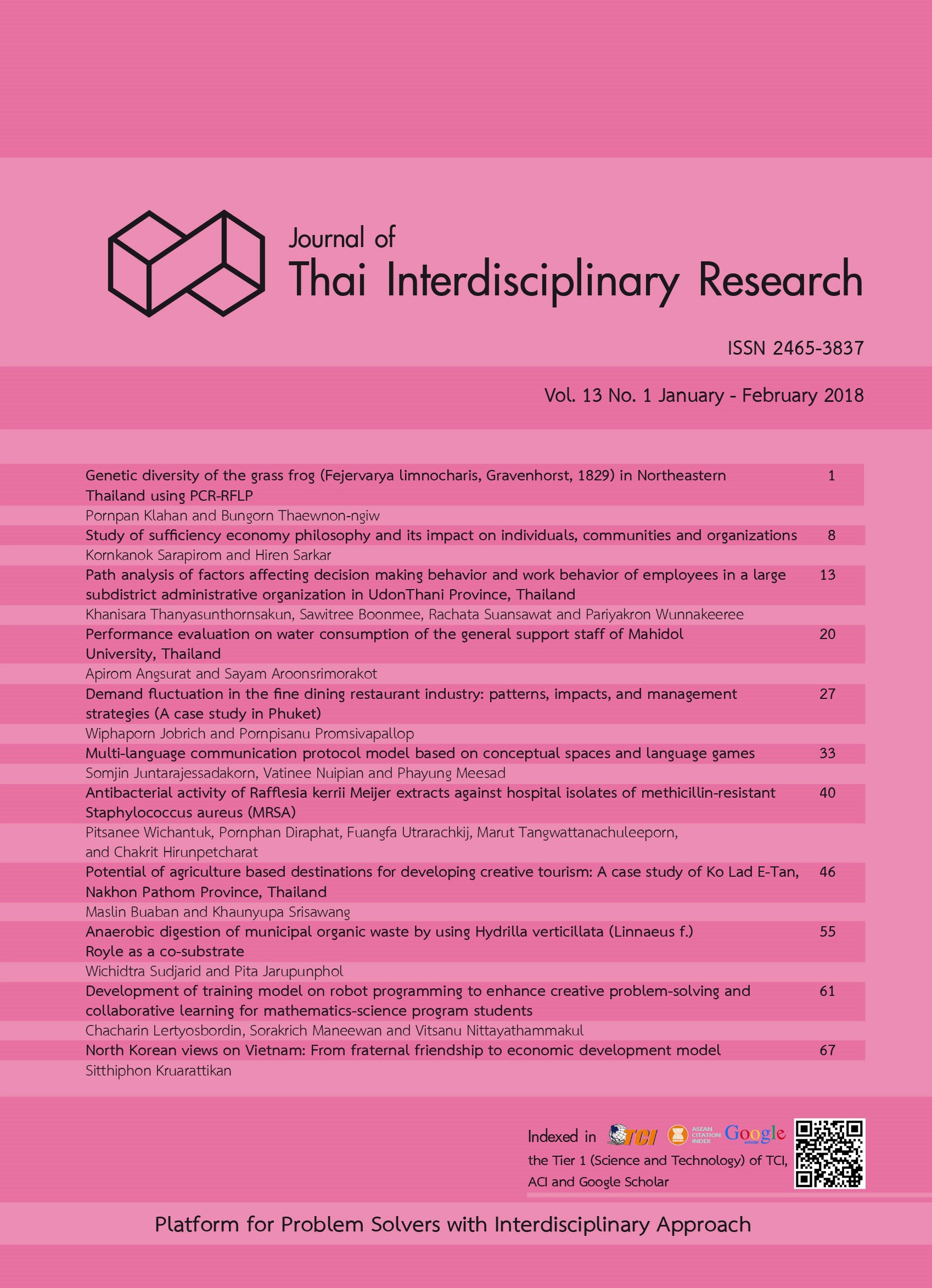Demand fluctuation in the fine dining restaurant industry: patterns, impacts, and management strategies (A case study in Phuket)
Main Article Content
Abstract
It is widely accepted that demand fluctuation has strong impacts on the management of restaurant operations. Because of demand variation, restaurant operators are faced with loss of sales, service quality deterioration leading to damaged reputation, unpredictable business performance and consequently cash flow problems. These issues have become increasingly significant and thus understanding the nature and impacts of demand fluctuation is essential to the management of restaurant business operations. In this study, the researchers empirically investigated patterns, impacts, and management strategies of demand fluctuation specifically on standalone fine dining restaurants in Phuket, Thailand. The study employed a qualitative method involving nineteen in-depth interviews with restaurant entrepreneurs and restaurant managers. The key results showed that patterns of demand fluctuation were slightly different between the restaurants located in Phuket Town and those located in beach front areas, but this reflected the different types of clients namely the locals and tourists. Furthermore, demand fluctuation leaded to different impacts on business. The operational cost became a major issue when the revenue dropped; follow by the awareness of raw material usage and the inconsistency in service delivery patterns. Therefore, it needed demand fluctuated management strategies to recover the instability of income. However, fine dining restaurants in Phuket commonly remained open for business during periods of low customers arriving and attempted to smooth the operation with intelligent enhancement strategies.


